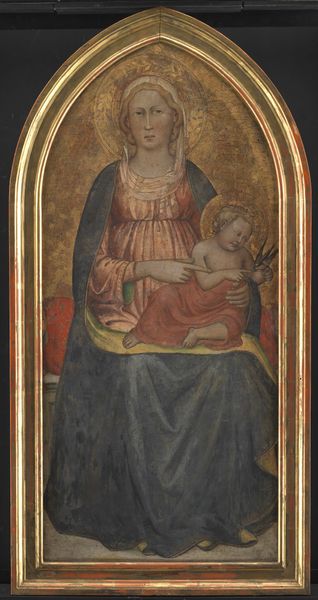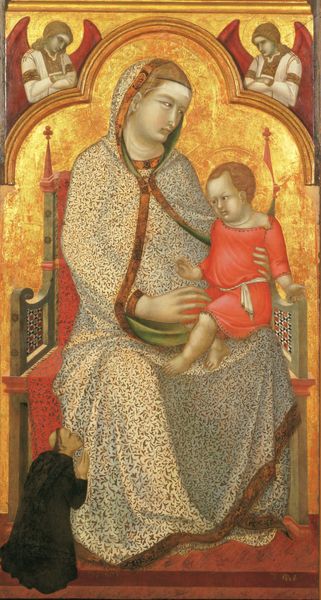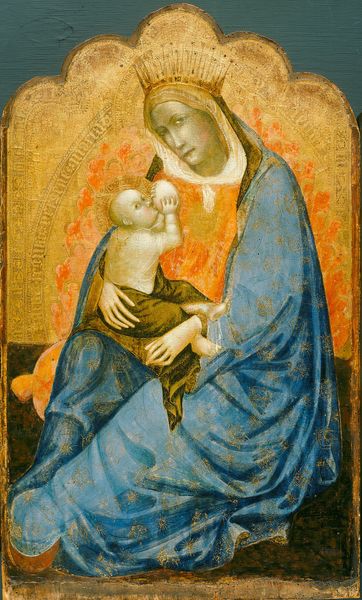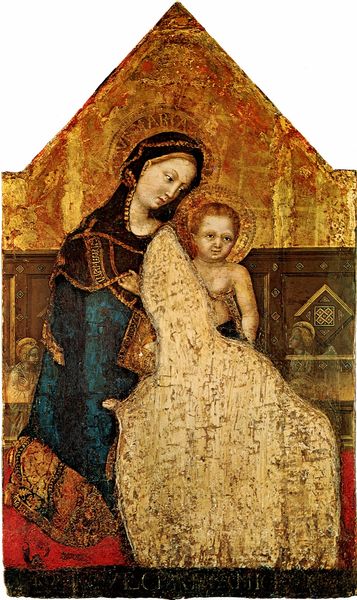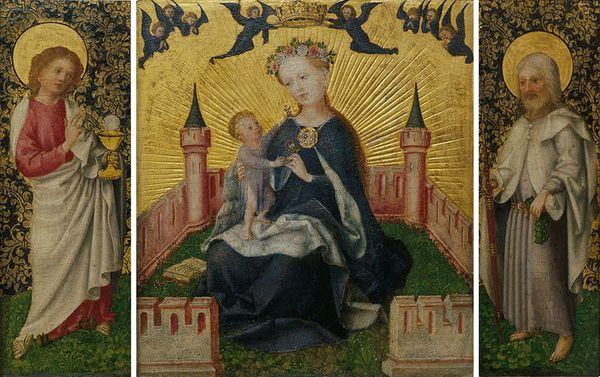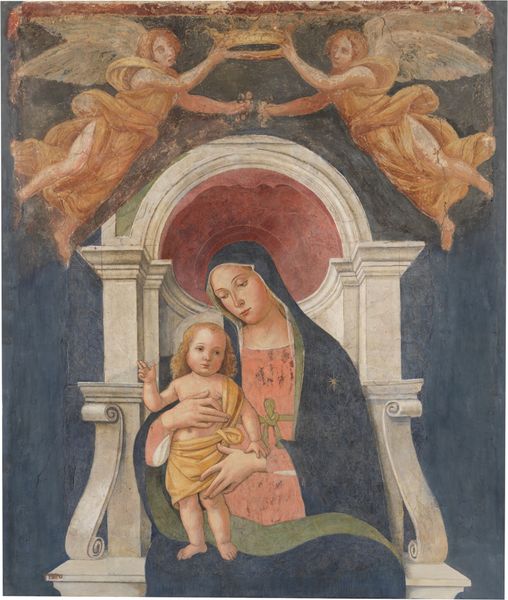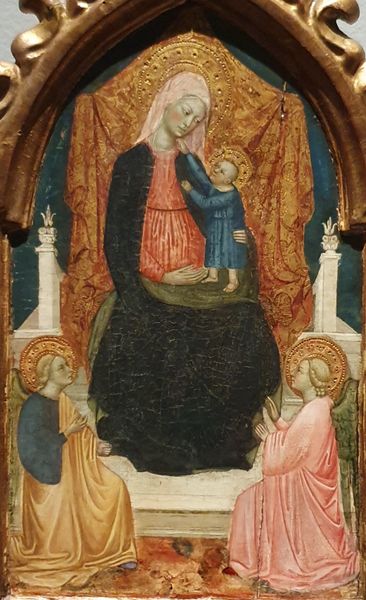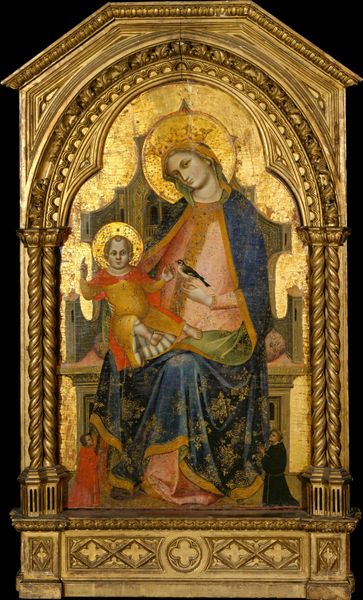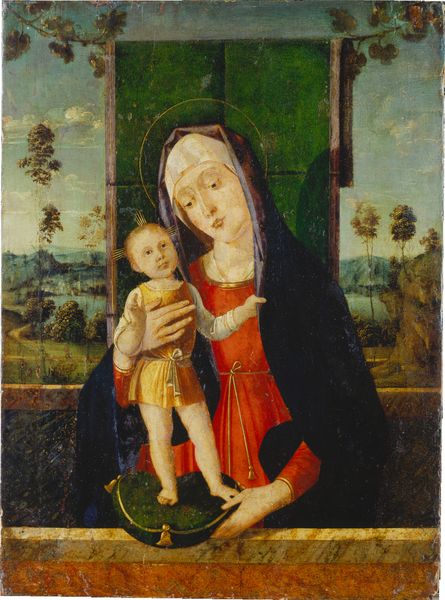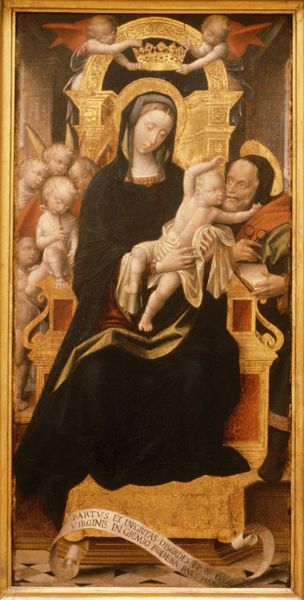
panel, tempera, painting
#
portrait
#
medieval
#
panel
#
tempera
#
painting
#
figuration
#
oil painting
#
history-painting
#
italian-renaissance
Dimensions: painted surface: 100.6 × 48.2 cm (39 5/8 × 19 in.) overall: 102.3 × 49.3 × 3.7 cm (40 1/4 × 19 7/16 × 1 7/16 in.) framed: 138.4 x 70.1 cm (54 1/2 x 27 5/8 in.)
Copyright: National Gallery of Art: CC0 1.0
Curator: Look at this tempera on panel. It’s a “Madonna and Child with Five Angels” from around 1335, made by Giovanni Baronzio. What catches your eye right away? Editor: It’s immediately striking—so much gilding! And the paint looks…worked. Like the tempera medium has been scrubbed into the surface. There’s a real emphasis on the physical stuff. Curator: Precisely! Notice how Baronzio uses the gold not just as background but within the Madonna's robes. Gold, of course, speaks to divinity and the celestial realm, a visual cue central to the sacred narrative. Also note the figures--the virgin seems unusually detached emotionally. What would you say about the use of line? Editor: Angular, sharp… the drapery has a life of its own almost, carved with deep strokes of the brush that catch the light. You really get a sense of the craftsman at work, layering meaning, line by line, gesture by gesture, in conversation with a religious archetype. But it's also striking how little three-dimensionality is expressed given the drapery. Curator: Yes, and this flatness is characteristic of the period, though Baronzio experiments within that boundary. This emotional restraint, as shown by Mary's somberness and how it may connect with her prophesied destiny. We might imagine this stillness as reflective, the quiet fortitude of faith. Editor: I find that tension really powerful: the human labor involved in devotional objects that point toward the divine and hint at something so unutterably heavy about motherhood and the divine contract. The layers of material process really communicate what could feel heavy if explained through narrative. Curator: It encapsulates a potent symbolic grammar of the era. Through the figures, Baronzio offers not just an image, but an entire visual theology of divine authority and spiritual expectation. Editor: Absolutely, the process creates an image and an icon. Seeing the technique, I engage more with both aspects. Curator: Precisely. A convergence of material, meaning, and enduring presence. Editor: Yes, I really get a feel for that in viewing this remarkable devotional painting.
Comments
No comments
Be the first to comment and join the conversation on the ultimate creative platform.
